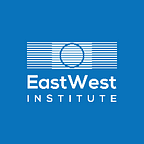North Korean Denuclearization: What It Might Look Like
For over three decades, North Korea, South Korea and the international community have discussed the possibility of denuclearization on the Korean Peninsula. In 1991, with the Cold War coming to an end, forever eliminating the presence of nuclear capabilities on the Peninsula seemed within reach. Unfortunately, Pyongyang disregarded international opinion and pursued nuclear capabilities at great costs to its own people. In the three decades since, North Korea has invested considerable fortune to develop its nuclear and missile programs. Consequently, if Kim Jong-un is serious about denuclearization, he will demand a steep price in concessions from South Korea and its allies, including the United States (U.S.), to offset the cost of forfeiting his nuclear capabilities.
To be successful, North Korean denuclearization must be verifiable and enforceable. Over the last three decades Pyongyang has agreed to four arms control agreements only to violate each one. Additionally, it has a history of deliberate and woeful non-transparency, even with humanitarian aid. Denuclearization will require three things: regular and comprehensive information releases on North Korea’s entire nuclear program, the ability to conduct inspections throughout North Korea and the capability to conduct no-notice inspections. Because sanctions against North Korea are becoming increasingly successful, the international community’s credibility in reapplying sanctions if Pyongyang is found to be non-compliant will be critical to guaranteeing North Korea’s full transparency and compliance.
Denuclearization does not have to occur immediately. Rather, the first step should curtail the growth of North Korea’s nuclear capabilities. Later Pyongyang can reduce and eventually eliminate its nuclear weapon program. In parallel, South Korea and its allies should apply a tiered approach to their commitments. Admittedly, this gradual approach was tried in both the 1994 Agreed Framework and the Six Party Talks and failed both times. However, if denuclearization is to be realized, segmenting implementation will be crucial to establishing the mutual trust necessary to prevent hedging, thus improving the likelihood of verifiable compliance. Searching for one monumental agreement is ideal but circumvents the foundational trust needed to ensure all parties are willing to accept the risks entailed in their commitments.
Pyongyang has always been willing to denuclearize, but its demands are likely to remain exorbitant. From the North Korean perspective, nuclear weapons provide unique deterrence and military benefits. With North Korea armed with nuclear capabilities, its opponents may be less willing to oppose Pyongyang’s aggressive actions or escalate conflict once it begins, providing the Kim regime with a coercive capability. For instance, when North Korea sunk the Cheonan and shelled Yeonpyeong Island in 2010, South Korea and its allies provided a minimal response. Kim Jong-un will want to ensure that what remains of the Korean People’s Army — an over one million strong force, with an expansive mix of missiles, armor, heavy artillery and multiple-launch rocket systems, as well as biological and chemical weapons — can continue to coerce South Korea and its allies. That will entail considerable concessions from Seoul and its allies.
